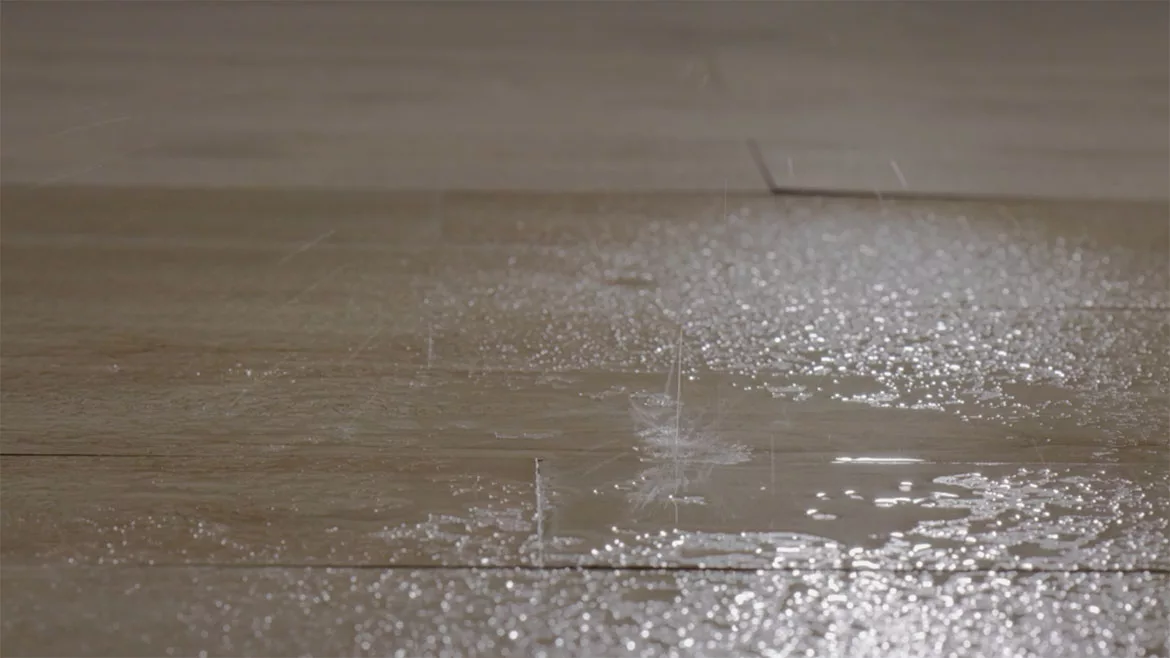Taking a proactive approach to leak detection in the commercial space
Complex commercial buildings call for smart leak detection to mitigate risk.

Video screenshot courtesy of Toa55 / Creatas Video+ / Getty Images Plus
Commercial buildings, like residential dwellings, are always at risk for some type of calamity—whether that’s fire, flooding, or inclement weather. For property owners and building managers, it’s important to be clear-eyed about these threats, but not paralyzed by them—after all, there are proactive steps that can significantly reduce risk and provide ongoing peace of mind to owner and occupants alike.
Take, for example water damage. This is a common threat in the commercial space, with leaks and flooding often leading to structural damage, mold and more. Just how prevalent is this threat? According to industry research, water damage accounts for about one out of every four commercial property claims.
Fortunately, there are simple safeguards commercial building owners can put into place in order to minimize their level of risk. First and foremost is smart leak detection technology, which allows building teams to identify leaks early, to promptly shut down water flow, and to make repairs with precision and speed.
What is smart leak detection?
While leak detection technology is nothing new, it has evolved considerably in recent years. Internet connectivity has turned leak detection into something exacting—and for commercial building owners, incredibly helpful.
There are two basic variants of leak detection technology. The more primitive version detects any water that drips onto a particular surface, while more advanced technologies actually learn water usage patterns for the building itself—and can trigger immediate alerts any time there is an irregularity.
This is where Internet connectivity comes into play. When smart leak detection valves pick up on an aberration in typical water flow—suggesting the possibility of a leak—they can send an alert straight to the phone or connected device of a building team member. Automatic shutoff of the water supply is another feature, ensuring that any time a potential leak is identified, the flow of water is stopped before significant flooding or property damage occurs.
Smart leak detection in commercial spaces
Smart leak detection can be valuable in any kind of space—indeed, many insurers now offer premium discounts to homeowners who have smart leak detection valves installed. And yet, there are some unique ways in which commercial spaces can benefit from having smart leak detection incorporated into their plumbing system.
Simply put, commercial spaces often have a much higher risk profile. This is in part because larger spaces tend to have much more complex plumbing architecture, meaning there are more opportunities for leaks to emerge. At the same time, the infrastructure within a commercial building can often be out of date, further increasing the risk of faulty plumbing and pesky leaks.
Another issue to consider is volume. Within a commercial space, there tends to be a higher volume of wastewater flushed down the pipes than there would be in a single-family home—and that puts a lot of strain on the plumbing, contributing to accelerated wear and tear and a higher leak potential.
In short, when it comes to leaks, commercial buildings can have a heightened level of risk—and yet, due to the sheer complexity of these buildings and the amount of activity they contain, it can be uniquely difficult to notice leaks when they form. All of these issues can be addressed with smart leak detection, which can provide prompt alerts to potential issues—allowing building teams to take corrective action before they have to deal with flooding or irreversible property damage.
Commercial spaces often have a much higher risk profile. This is in part because larger spaces tend to have much more complex plumbing architecture, meaning there are more opportunities for leaks to emerge.
Choosing the right leak detection technology
Actual installation for a smart leak valve is fairly basic, typically working in just the same way as a water supply valve. Even so, building teams will likely want to have an experienced plumber advise them on their options, especially since smart leak technologies are so numerous—and so different from one another.
What should building managers know about picking the right smart leak detection? First and foremost, it’s best to look for something flow-based as opposed to point-of-contact-based, ensuring a more comprehensive safeguard. It’s also important to note that, when it comes to smart leak detectors, the premium option really can offer the greatest value—in terms of features, product longevity and warranty.
Investing in smart leak detection can be an important way to guard against water damage—but there are other benefits for building owners to consider, too. With water scarcity a looming global threat, conservation is more urgent than ever. Smart leak detection is one practical solution for commercial building owners to play their part in reducing waste—and it can help meet sustainability goals, too.
Managing water issues can be challenging in any space, especially larger and more complicated ones. That’s precisely why smart leak detection is a must-have, not least for the owners and managers of commercial buildings.
Looking for a reprint of this article?
From high-res PDFs to custom plaques, order your copy today!







